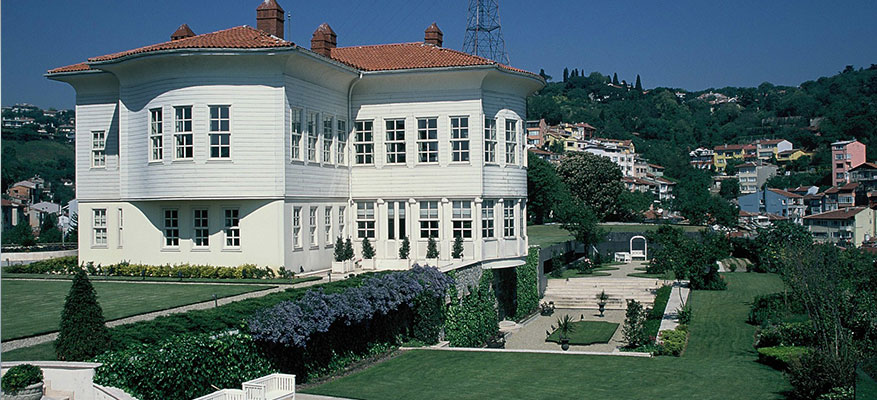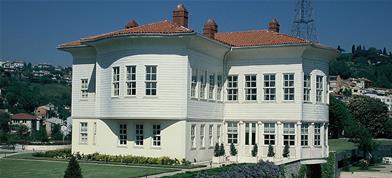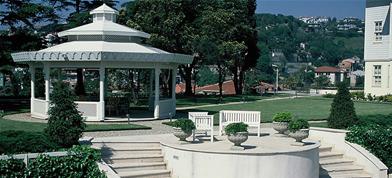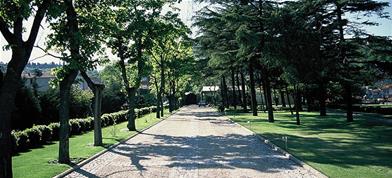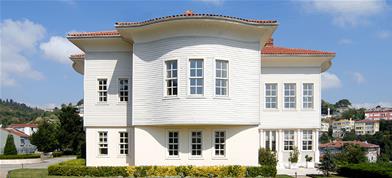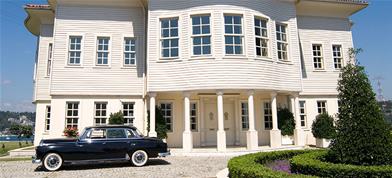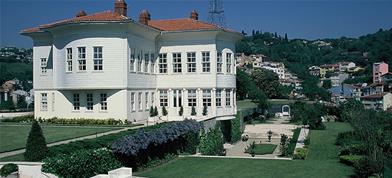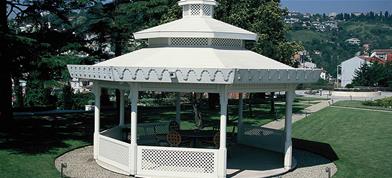Treasury land from Akıntıburnu to Bebek Garden that was bestowed upon Janissary Hasan Halife by Sultan Murad IV (1623-1640), was transferred to national treasury following a rebellion in 1631-1632 in the reign of Sultan Mehmed IV (1648-1687). 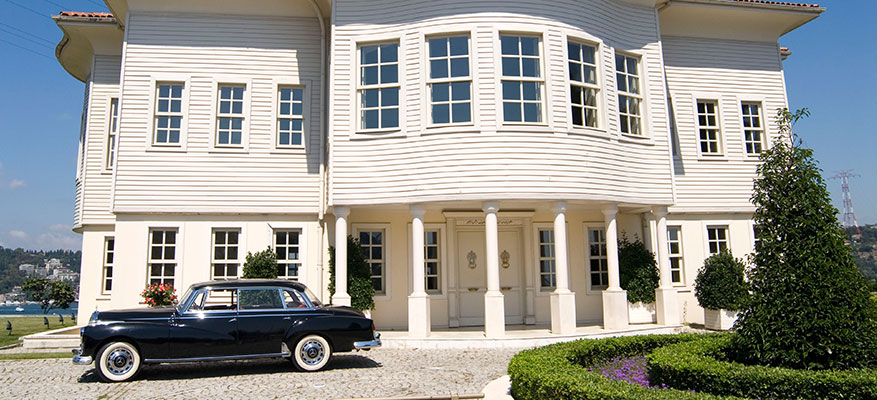
In the reign of Sultan Ahmed III (1703-1730), treasury land from Hasan Halife Garden to Kayalar Village, was sold by Grand Vizier Damad İbrahim Pasha in 1724/25. Grand Vizier İzzet Mehmed Pasha, who has a share in the said lands, built a pavilion just for the Sultan.
Sultan Selim III (1789-1807) set foot on İzzetabad Pavilion for the first time upon the invitation of GRAND Vizier İzzet Mehmed Pasha, but later he frequently came to the Pavilion for pleasure and entertaining activities. After a fire on May 15th, 1798; İzzetabad Pavilion was burnt down. And Grand Vizier İzzet Mehmed Pasha died in Manisa on September 18th, 1812.
|
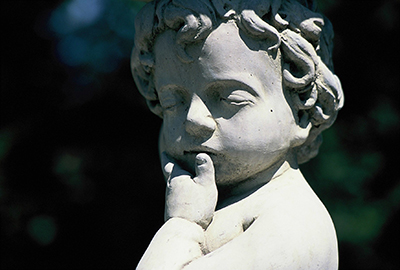
Treasury land from Akıntıburnu to Bebek Garden that was bestowed upon Janissary Hasan Halife by Sultan Murad IV (1623-1640), was transferred to national treasury following a rebellion in 1631-1632 in the reign of Sultan Mehmed IV (1648-1687).
The pavilion was rebuilt and redecorated by Chief Architect Mustafa and Hayrullah Efendi from Şehremini, between the years 1800-1804, and the palace was used by Sultan Selim III and Mahmud II (1808-1839).
In 1836, the palace was reserved for daughter of Mahmud II, Mihrimah Sultan and her husband Mehmed Said Pasha, and in the reign of Sultan Abdülmecid (1839-1861), the palace was demolished in 1840s and daughters of Sultan Mahmud II, Atiye Sultan and her husband Fethi Ahmed Pasha lived in twin mansions built in the place of İzzetabad Pavilion. After demise of Seniye and Feride Hanım Sultans, possession of twin mansions was taken by Department of Treasury, on December 1st, 1920.
In 1923, the palace was rented by Mehmed Bey. In 1929, İbrahim Ali Bey was a tenant in the pavilion. As per a regulation dated June 14th, 1931, the pavilion was bought by Kudret Azmi Bey, with the name of Feyz-i Ati High School. After this date, the high school was named Boğaziçi High School and closed down in 1944. In 1958, it was demolished to widen the roads. Afterwards, on July 18th, 1934, an acquaintance of Atatürk, Recep Zühtü Soyak bought the pavilion. In January 1964, it was sold to Özdemir Birsel –producer and director- and his brother Nüzhet Birsel and hosted many artists and movie stars including Belgin Doruk, Özdemir Birsel’s wife and renowned artist. Murtaza Sadık Kağıtçı, owner of Ece Agendas bought the pavilion in 1968 and wanted to pull it down in order to build a different building. However, the amended law on Boğaziçi development plan did not permit this modification.
Bayraktar family bought the pavilion on August 1st, 1989; and by the year of 1992, İzzetabad Pavilion was rebuilt to become the headquarters of Bayraktar Holding.
|
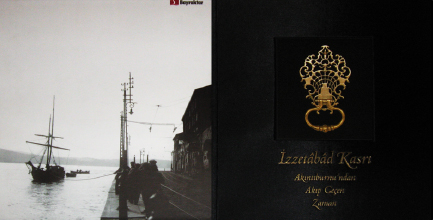
When the Bayraktar Group bought İzzetâbâd Pavilion, there was nothing more than relics of the basement. Its construction and renovation was completed in 1999. Thanks to the Bayraktar Group, Istanbul and Turkey have regained a precious heritage from the period of Selim III. After four years, in 2003, we started out to initiate the research which would unearth the mysterious history of İzzetâbâd Pavilion and Akıntıburnu, together with Dear Emine Çiğdem Tugay and Dear Mehmet Selim Tugay. In the corridors of the history of Akıntıburnu, tracing back to nearly 2 thousand years ago, we started to discover the sophisticated and colorful history of İzzetâbâd Pavilion which witnessed great joys as well as torments and conspiracies to date. As a result, the book of İzzetâbâd Pavilion, Time Flies Away from Akıntıburnu was published to reveal the history of İzzetâbâd Pavilion and Akıntıburnu in light of historical documents. Today, we have this precious work of art written by Dear Emine Çiğdem Tugay and Dear Mehmet Selim Tugay, and which gained further value thanks to the highly professional design by Dear Joelle İmamoğlu. |
